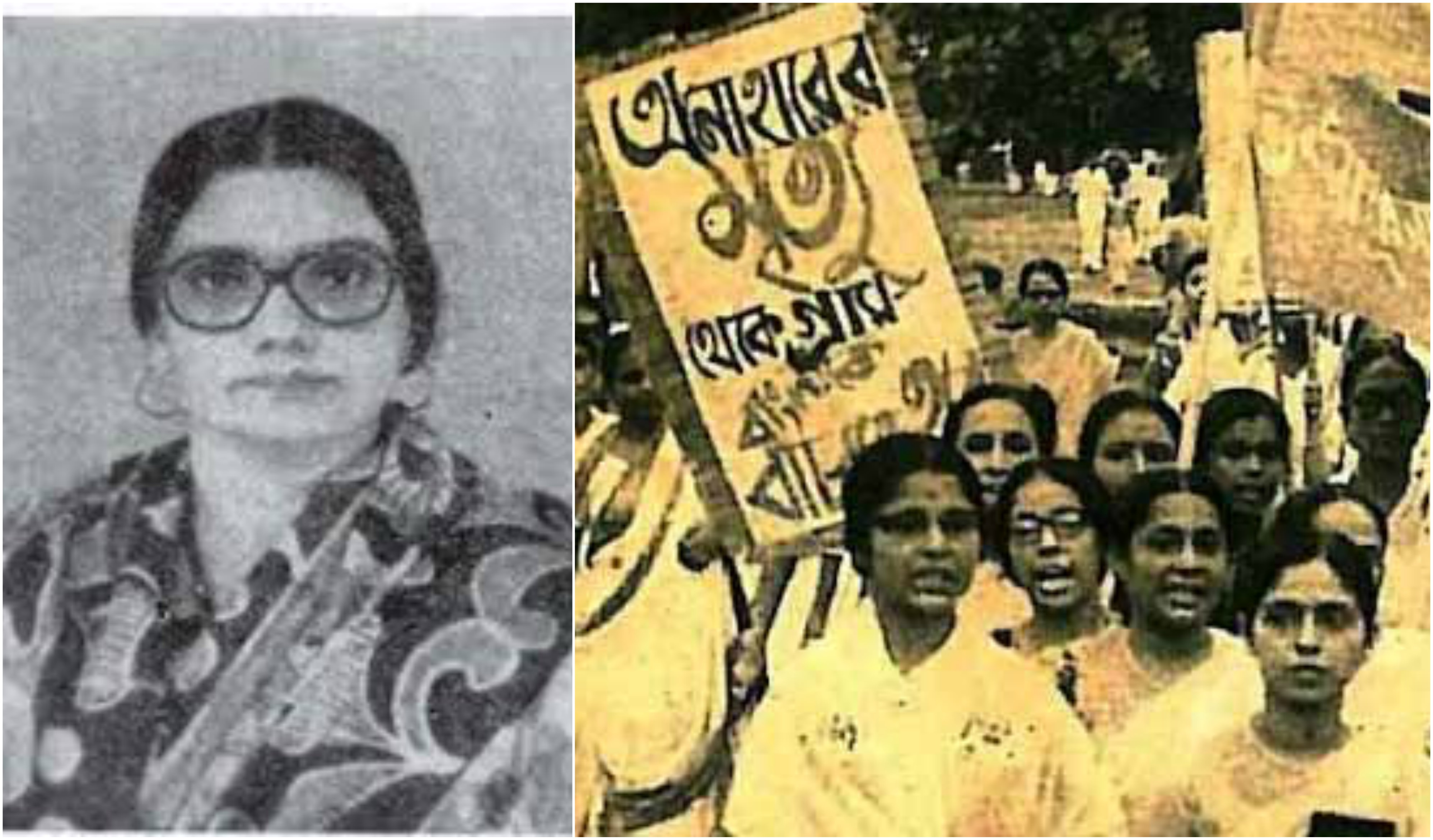Bimala Maji was a peasant activist from Midnapur, Bengal who played a vital role in organising the peasant women into the Nari Bahini (tr. Women’s militia) in the Tehbhaga Movement, subverting her marginalisation as a lower class, Dalit child-widow into a position of power.
The Tebhaga Movement
The Tebhaga Movement of Bengal erupted in 1946 Bengal soon after Independence, against feudal exploitation. The main resolution of the movement was the abolition of the Zamindari system. The demand was that the jotedars (landlords) pay the sharecroppers tebhaga or two-third of the yield instead of the petty half that they were paid before. The movement witnessed large scale participation of women who sought to fight against the oppression of feudal-patriarchy.
Early Struggles
Bimala Maji was married about the age of thirteen into a family of dacoits. She faced a lot of abuse and repression. Soon after, her husband passed away. Widowhood coupled with poverty and starvation caused by the Bengal Famine of 1943 was however, the beginning of her political life as a woman peasant activist. She joined the Mahila Atma Raksha Samiti (MARS) under Manikuntala Sen, an upper-caste, middle-class woman from the Communist Party of India. The MARS, active during the famine years worked towards organising women and training them in self-defense against the double disadvantage of starvation and sexual exploition.
The movement witnessed large scale participation of women who sought to fight against the oppression of feudal-patriarchy.
When the Tebhaga Movement took off, the leaders of the MARS appealed to the peasant womenfolks to join the movement in large numbers. In the beginning, the roles that womenfolks were given were gendered and subsidiary—they cooked for the men, signalled them in case of apparent threat and so on. But as the movement grew violent and CPI withdrew itself from active involvement, they formed their own militia called the Nari Bahani. However, while Bimala Maji has spoken many times about the role that Manikuntala Sen has played in her political life, Sen, in her memoirs only glossed over the revolutionary work that Manjhi did in Midnapur. This points towards the distance which remained between the upper classes and the peasantry within the Tebhaga Movement.
Also read: Babytai Kamble: Chronicler Of Dalit Women’s Lives
Tha Nari Bahini
Bimala Maji organised the women of Nandigram in Midnapur into Mahila Samitis (women’s committees) which undertook many projects, most importantly, the dheki programme. Under this programme, they borrowed paddy from the landowners on trust to be husked on dhekis (rice husking pedal operated by foot) and sold them in the local markets, repaying the landowners with the money they had earned. Not only were the women involved economically empowered to feed their own families but they also gained political agency within their community. In an interview in 1968, Bimala Maji also claimed that they had stopped domestic abuse in large areas at the time of the movement.
Not only were the women involved economically empowered to feed their own families but they also gained political agency within their community.
As the Tebhaga Movement turned violent and the CPI withdrew support, it fell upon Bimala to organised women into a militia. Under Bimala’s lead, they destroyed the’ threshing floors in the yards of the jotedars with hoes, and ceased and sold their paddy-shares to small steamers passing by on the river. Armed with Red Flags, brooms and chilly powder, these women went around dozens of villages gathering the harvest and stacking them on a joint theshing floor for the peasants. They were hounded by the local police and the paramilitia supported by the jotedars but the women far outnumbered them and chased them out with their brooms.
Also read: Remembering Chipko Movement: The Women-led Indigenous Struggle
The Coming of Class and Gender Consciouness
This was an important moment in the history of India.They organised themselves without the aid of the CPI and the menfolk of the peasant community who had a lukewarm interest in the organisation of women for the rebellion. More importantly, not only did their movement see the coming together of women from different classes of society, but it also was led by women from the peasant class. While earlier movements, like MARS had contributed towards the growth of political and economic consciousness among the women from the peasant class but they were mostly led by the highly educated middle class women. Most members in the Nari Bahani were doubly oppressed agricultural labourers from the Dalit and tribal communities.
But, eventually, caught in an inescapable village, they were surrounded, brutalised and taken into arrest. For a month, Bimala Maji, along with her son was kept in a cage. About 140 court-cases were filed against her and she was detained for two and a half years to be released only after the Partition of the subcontinent. Even in her arrest, she continued her rebellion against the feudal forces and the complicit state. She recounted, “After our arrests the police and the guardsmen belonging to the jotedars’ paramilitia went to eat goat at the landlord’s house. I did not permit them to feed the landlord’s milk to my child. At the police station a crowd of policemen who all had vainly tried to catch me came to watch me curiously.”
Also read: 5 Dalit Women Poets Who Remind Us That Caste And Patriarchy Are Not Exclusive
References
1. Women’s Role in the Tebhaga Movement by Peter Custers
2.The Role of women in Tebhaga Movement by Shyamal Chandra Sarkar
3. Revolutionary Desires: Women, Communism, and Feminism in India by Ania Loomba
4. Arutla Kamala Devi: First Opposition Woman Leader In India
About the author(s)
Megha is a 20-something English graduate who still hasn’t figured out how to pronounce ‘genre’ and fills her void with self-made memes and overpriced pasta.




